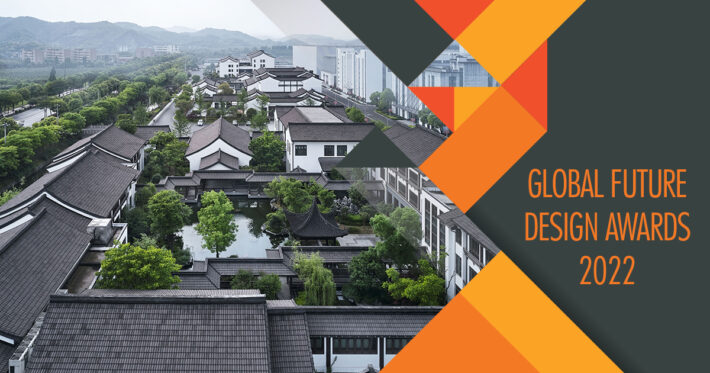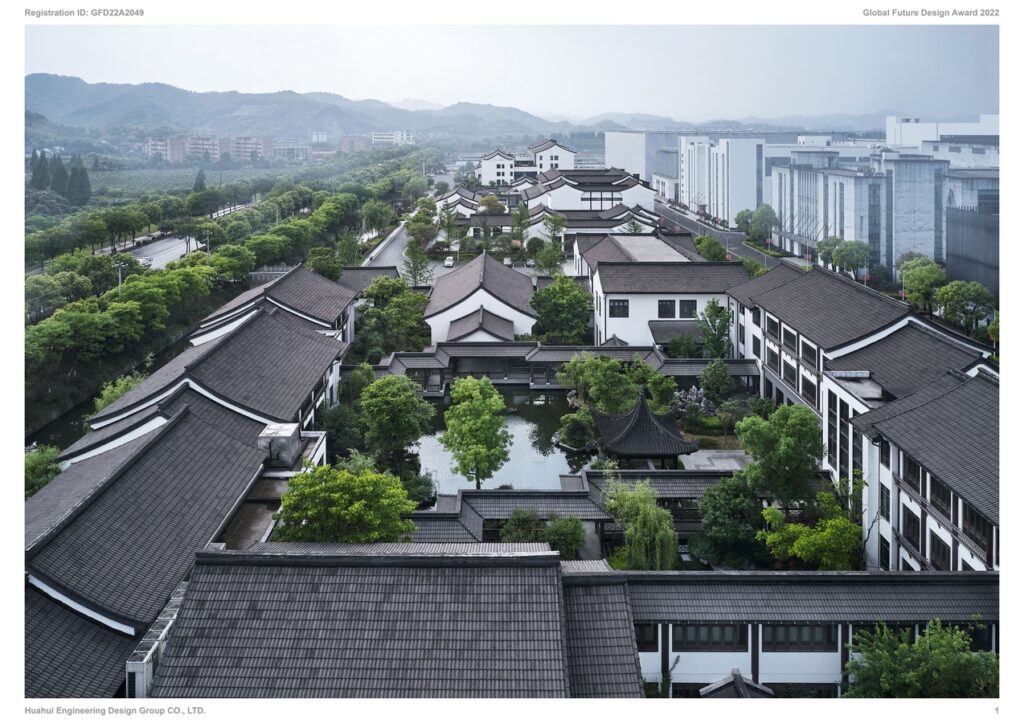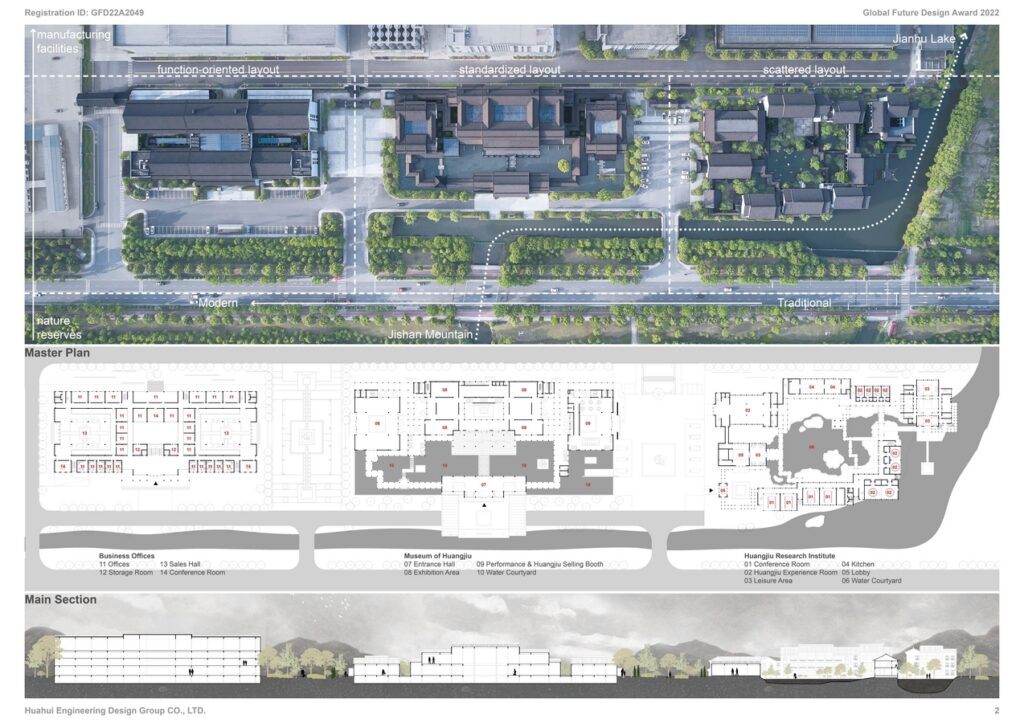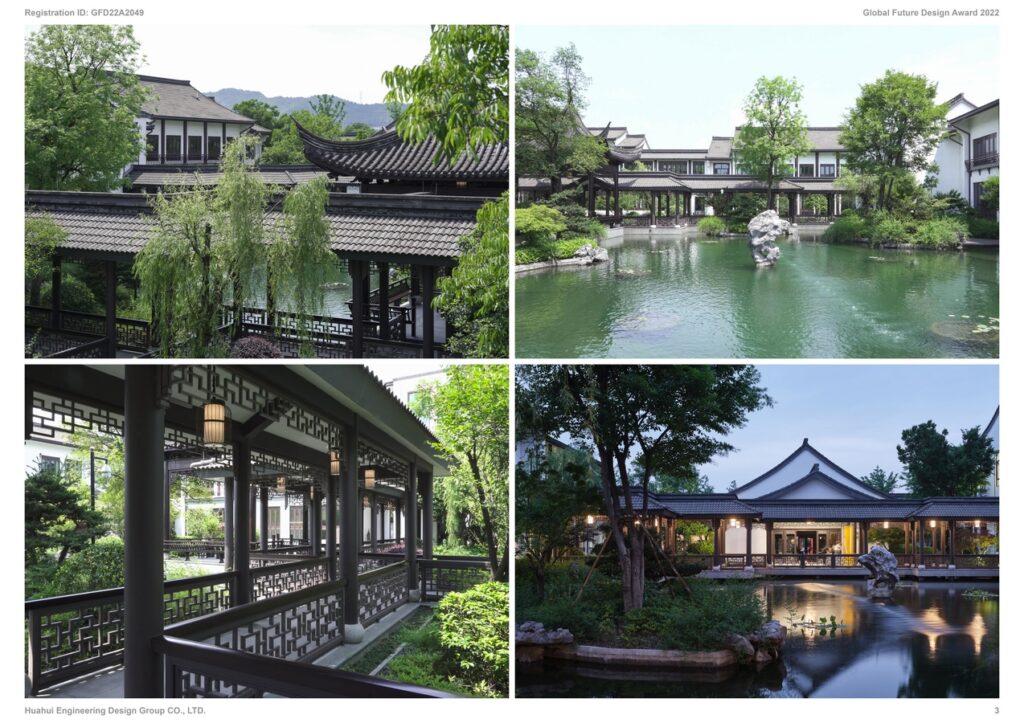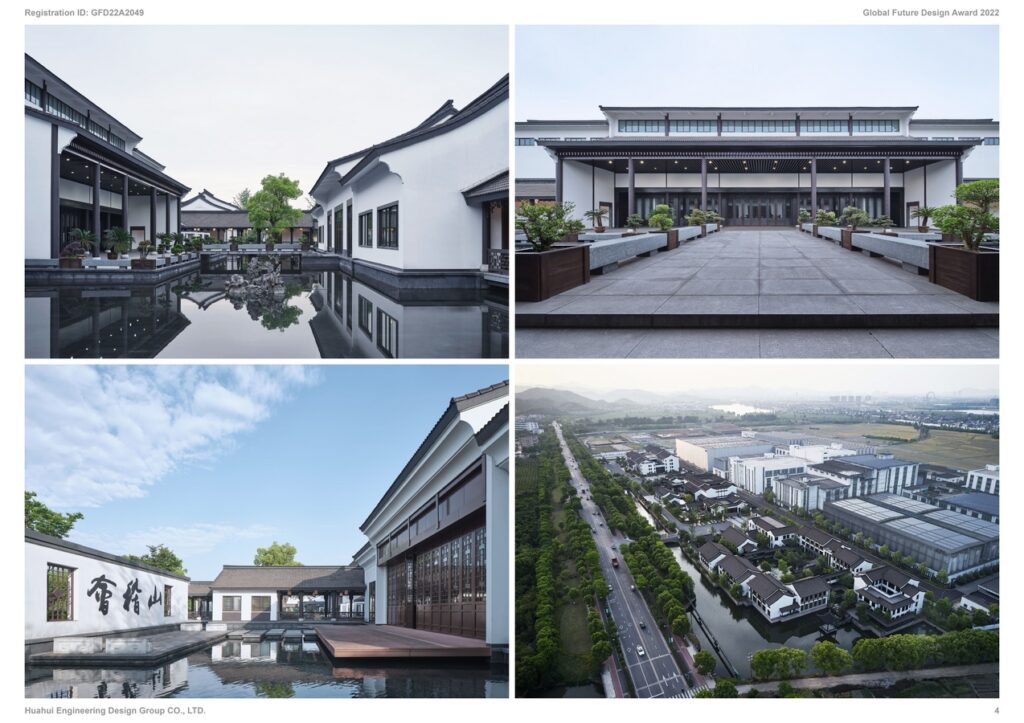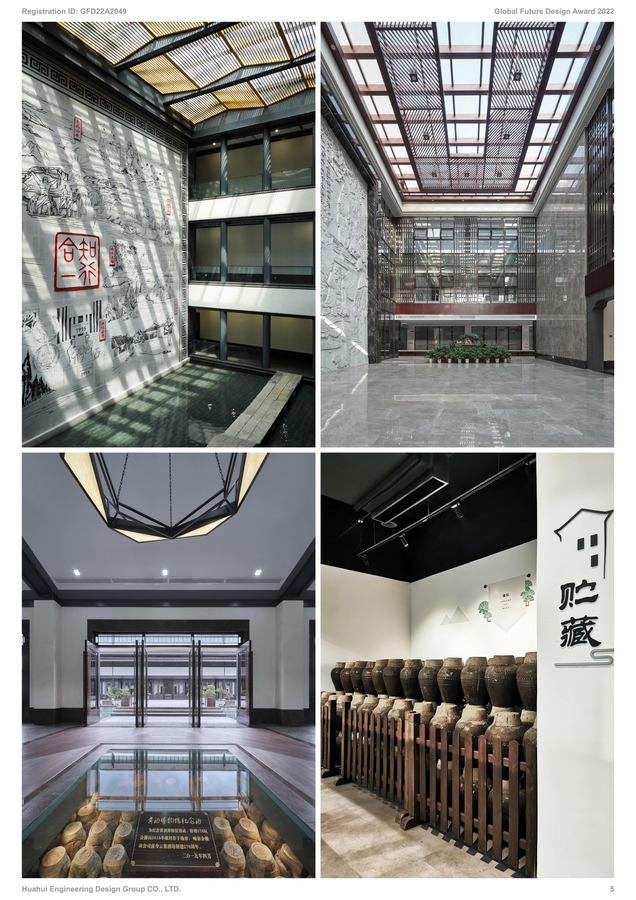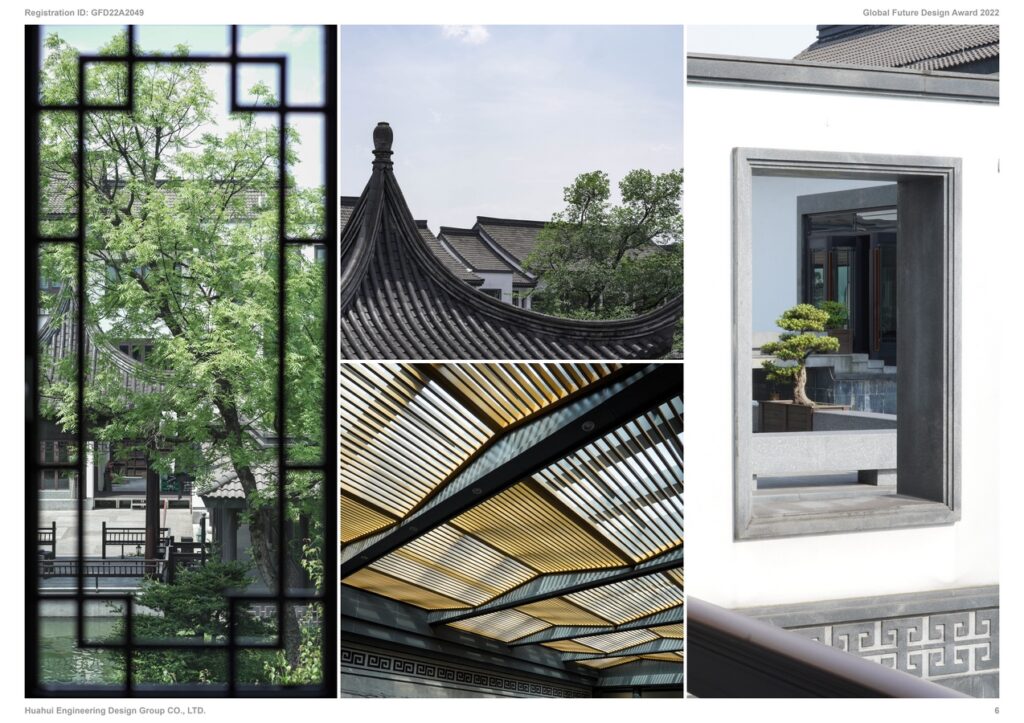Kuaiji Mountain Huangjiu Research and Development Center (KMHRDC) is located in the town of Hutang, on the outskirts of Shaoxing. Hutang is part of the first group of “innovative revival towns” under the Zhejiang Historical Towns Plan, a scheme put forward by the provincial government to promote economic and cultural development in rural areas.
Global Future Design Awards 2023: Entries Open!
Bronze 🏆 Winner
Global Future Design Awards 2022
A Narrative Water Courtyard Linking Traditional and Modern: Shaoxing Kuaiji Mountain Huangjiu Research and Development Center
Cultural Architecture (Built)
Firm
Huahui Engineering Design Group CO., LTD.
Architect/Designer
XU Yiming
Design Team
ZHOU Minyu, HU Xinying, WEN Song, XIA Zhigang, CAI Xiaojiang, FANG Xiang, SHEN Pingping, WANG Jin, GAO Jianghai; Structure Team: LU Haijun, XU Zheng, WANG Yuping, CAO Liangliang; Plumbing Team: GUO Yuping, XU Xiaofei; Electric Team: LI Feng, MENG Fengfeng, LOU Baohua; HVAC Team: ZHAO Jun, ZHANG Jianqing; Landscape Team: LI Guangchao
Location
Shaoxing City, Zhejiang Province, China
Country
China
Photographer/Copyright
©ZHANG Yong, ArchiDogs
The project is located at the foot of Jishan Mountain. To the south and east it is adjacent to the tributaries of Jianhu Lake, while to the north lies the massive concrete-built factories and rice wine steel fermentation tanks of the Kuaiji Mountain Huangjiu Production Zone (note: huangjiu is a type of Chinese rice wine). In this complex environment, simultaneously addressing the needs of both cold manufacturing and natural landscapes became the biggest challenge of this design project.
As the face of the town, KMHRDC is close to the Kuaiji Mountain Huangjiu Production Zone, which contains three functional districts: Huangjiu Research Institute, Museum of Huangjiu, and Business Offices. Different from the systematic faux antique construction methods, the design team deliberately used both modern and traditional architectural languages in the overall layout and spatial design of this project. In this way, the project can help to carry forward the historical context of Shaoxing, while also serving as a transition point between the manufacturing facilities (modern) and nature reserves (traditional) on either side of the site.
Water is the symbol of Shaoxing, the water courtyard is the symbol of Shaoxing homes, and Jianhu Lake is the symbol of Shaoxing huangjiu. This project took water as its main design concept. As a result, on the architecture scale, two key elements were used, namely the water courtyard and the ‘taimen’, a Shaoxing traditional residential gate. The water courtyard creates a distinctive garden landscape with diverse functionality, while the ‘taimen’ arranged the division of spatial sequences, and echo huangjiu’s origins as a folk drink in the Kuaiji Mountain area. In addition, the placement of structures like corridors, pavilions, and walls breaks up the 40,000-square-meter site into an appropriate scale for a courtyard. The circulation was organized through the concepts of traditional Chinese gardens such as landscape movement and perspective shift. Through walking movement and perspective transformation, the space is more effectively connected. The traditional, scattered layout of the Huangjiu Research Institute makes the space winding with a sense of mystery. The standardized layout of the Museum of Huangjiu is relatively modern and geometric. Its spatial atmosphere is open and ceremonial. The Business Offices district, meanwhile, is purely functional, with a function-oriented layout. And, in conjunction with the water courtyard and taimen, the seemingly different patterns are unified, making the space more fun to wander through.
Building materials and forms range from the small black tiles in the wooden frame of the Huangjiu Research Institute to the gradually emerging large glass and steel structure of the Museum of Huangjiu. The design team established a dialogue between tradition and modernity through the unification of scale, form, texture, and color.


